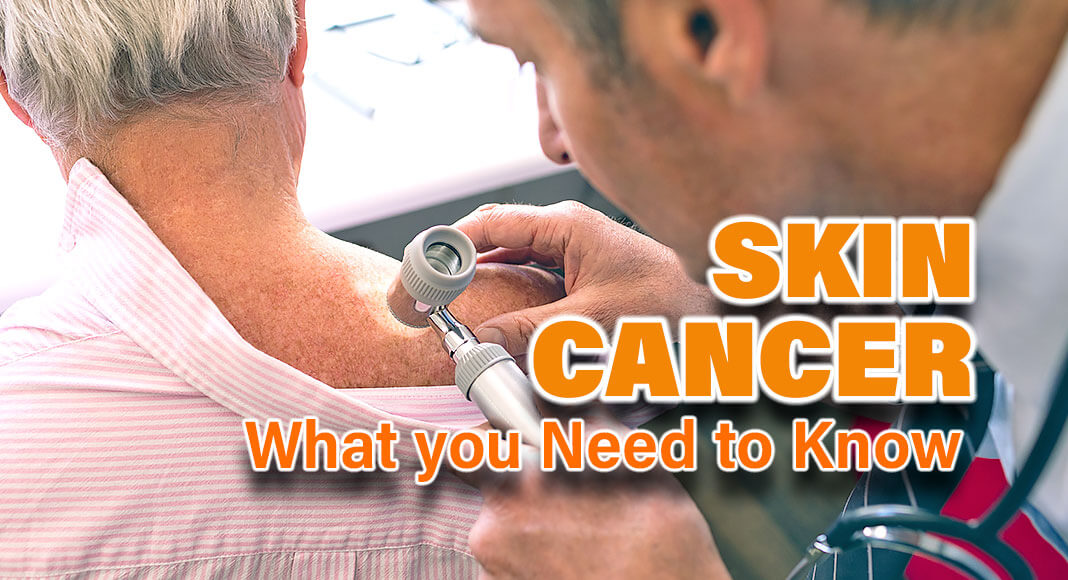
Mega Doctor News
By texasoncology.com
While skin cancer is the most common form of cancer, many cases are easily preventable by limiting exposure to the sun’s harmful rays and avoiding indoor tanning. Basal cell and squamous cell are the most common skin cancer types and are highly curable if caught early. Texas ranks third in the nation for newly diagnosed cases of melanoma, the deadliest form of skin cancer.
Statistics
- At least twenty percent of Americans will develop skin cancer by the age of 70.
- In 2023, an estimated 5,530 melanoma cases are expected to be diagnosed in Texas, with approximately 470 deaths.
- Those who have used indoor tanning beds are 58% more likely to be diagnosed with squamous cell carcinoma, and 24% more likely to be diagnosed with basal cell carcinoma, than those who have not used indoor tanning beds.
Risk Factors
- Ultraviolet (UV) Light Exposure: Sunlight is the primary source of UV radiation.
- Indoor Tanning: Sun lamps and tanning beds emit UV radiation, which can cause skin damage and skin cancer.
- Family History: Those with a family history of melanoma have an increased risk for the disease.
- Personal History: Those with a personal history of skin cancer or sunburns, especially burns early in life; a high number of moles; skin that burns, freckles, or reddens with ease; or skin that is painful in the sun are at a higher risk.
- Fair Skin: People with fair skin are at a higher risk of developing skin cancer, especially those who also have freckles, blue or green eyes, and red, blond, or light brown hair. However, everyone is at risk of developing skin cancer and should take precautions. In fact, though melanoma is less frequently diagnosed among people who are Black, Hispanic, or Asian, it is more often identified in later stages. Those at a higher risk for skin cancer should seek annual skin cancer screenings with a dermatologist.
See document below for a quick fact sheet:
Symptoms and Signs
The most common warning signs of skin cancer are new or unusual changes on the skin. It is important to have any changes to a mole or spot on the skin checked by a dermatologist. The ABCDE guide is a useful tool when checking your skin for melanoma warning signs.
- A = Asymmetry: One half of the lesion is different from the other in size, shape, or color.
- B = Border: The edge or border of the lesion is not smooth.
- C = Color: The color of the lesion contains various shades of tan, brown, black, and in some instances red, white, or blue.
- D = Diameter or Dark: A lesion that is darker than others, regardless of size.
- E = Evolving: The lesion changes over time or develops new symptoms, such as bleeding, crusting, or itching.
Tips for Prevention
- Limit Exposure: Avoid being outdoors in sunlight too long, particularly between the hours of 10 a.m. and 4 p.m., when UV light is strongest, and avoid indoor tanning.
- Protect Your Skin: Tightly woven, long-sleeved shirts and long pants or skirts are the most protective against UV rays. Use a broad spectrum (protective against both UVA and UVB rays), water-resistant sunscreen with SPF 30 or higher on areas of skin exposed to the sun. Reapply every two hours or according to the product label. Water-resistant sunscreens need to be reapplied every 40 or 80 minutes, according to the product label. Use sunscreen on days with light or broken cloud cover, as UV light still permeates.
- Wear a Hat: A hat with a wide brim can help protect areas exposed to the sun’s rays, such as the neck, ears, eyes, forehead, nose, and scalp. Straw hats may allow UV rays through, so choose a hat with a tight weave.
- Wear Sunglasses: Wrap-around sunglasses with UV absorption provide the best protection for the eyes and the skin around the eyes. Look for sunglasses labeled as blocking both UVA and UVB light.
Treatment Options
Basal cell and squamous cell cancers are most often cured by minor surgery or local treatments. The type of treatment depends on the size, location, and type of cancer. For certain squamous cell cancers with a high risk of spreading, surgery might be followed by radiation or chemotherapy. Immunotherapy and targeted therapy are also used to treat skin cancer.
Sources: American Academy of Dermatology, American Cancer Society, American Society of Clinical Oncology, Centers for Disease Control and Prevention, National Cancer Institute, and Skin Cancer Foundation
Information Source: texasoncology.com










